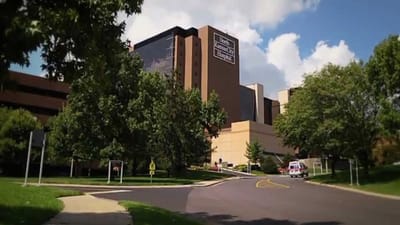
In the mid-2000s, California stood at the threshold of a digital revolution. The market dominance of cable providers had led to stagnation in pricing, service options, and infrastructure innovation. That status quo was disrupted by a sweeping piece of legislation—AB 2987, The Digital Infrastructure and Video Competition Act of 2006. Behind this bill was an unlikely coalition of labor leaders, business associations, elected officials, consumer advocates, and telecommunications providers. I had the opportunity to work within AT&T’s California public affairs team at the time, helping craft and communicate the policy case for a new era of competition and digital access.
The story of AB 2987 is not just a legislative triumph—it is a case study in coalition building, rapid regulatory adaptation, and the challenging task of aligning public interest with private enterprise. It revealed how state-level action can catalyze infrastructure investment and open markets once deemed monopolistic.
The Problem: Monopoly by Default
For decades, local governments issued city-by-city cable franchises—an antiquated process that resulted in limited competition and geographically uneven coverage. Consumers in many communities had only one option for pay-TV services. Cable bills soared, service remained static, and technological innovation lagged.
At the same time, AT&T and other telecom carriers were investing billions in broadband infrastructure—laying the groundwork for IP-based services, from internet and digital voice to streaming television. The regulatory problem? Telecoms still needed approval in every locality to compete with entrenched cable providers, even when their technology offered new capabilities and better pricing.
The Catalyst: A New Vision for California
Assembly Speaker Fabian Núñez introduced AB 2987 in early 2006, backed by a broad and bipartisan group of stakeholders. The legislation proposed a single, statewide video franchise process administered by the California Public Utilities Commission (CPUC). Instead of negotiating dozens or even hundreds of local agreements, a new entrant could now receive authorization in 30 days and begin delivering services across the state.
It was a sea change in telecommunications law. But it was not without controversy.
Consumer groups were initially skeptical, concerned that rural and low-income communities might be left behind. Cities worried about losing franchise fee revenues or local control over rights-of-way. PEG (Public, Education, and Government) access proponents feared a loss of funding.
In my role, I helped shape public narratives and informational resources for use in community meetings, council hearings, and media interviews. Much of our messaging centered on the theme of Choice. Competition. Consumer Savings. The aim was to show that reform didn’t mean deregulation—it meant modernization.
The Politics: Building the Coalition
Over 250 organizations came out in support of the bill. These included powerhouse labor unions like the California Labor Federation and the Communications Workers of America (CWA); major employers such as Intel, Microsoft, and Alcatel; and civic groups like the League of United Latin American Citizens (LULAC) and the National Council on Aging.
Editorial boards from the San Francisco Chronicle to the Los Angeles Times voiced support. Each publication focused on the same theme: consumers stood to save real money—up to $1 billion per year—if video competition could take hold.
As part of the AT&T California external affairs team, we helped orchestrate meetings, fielded public inquiries, and delivered updates to stakeholders. We translated dense policy into accessible language. We highlighted job growth estimates: over 10,000 new positions, especially in construction, engineering, and IT. And we underscored that PEG funding, franchise fees, and consumer protections would not only remain but be strengthened.
The Outcome: Law and Legacy
AB 2987 passed both the Assembly and the Senate with overwhelming bipartisan support. On September 29, 2006, it was signed into law by Governor Arnold Schwarzenegger and became effective January 1, 2007.
The impact was immediate. Within five years, Californians saw new video services roll out across the state, from urban centers to rural towns. Infrastructure investment surged. Broadband speeds improved. And cable prices—long a point of consumer frustration—began to stabilize in competitive markets.
AT&T, for its part, invested an additional $1 billion into its "Project Lightspeed" initiative, which brought fiber deeper into neighborhoods and supported next-generation TV, digital voice, and faster internet access.
Lessons from the Field
I was in my early 30s at the time and had recently moved into a public affairs leadership role after supporting the SBC-AT&T merger from our California office. The AB 2987 effort taught me that policy change is possible when facts are paired with stories, and when corporate initiatives align with public benefit.
It also showed me how challenging—but rewarding—it can be to work at the nexus of business, technology, and public service. Whether presenting to local officials, coordinating with advocacy groups, or answering tough press inquiries, the goal was always the same: explain why this matters.
Sidebar: Lessons from the AB 2987 Campaign
- Coalition Power: Building unlikely partnerships (labor + business + civil rights) created momentum.
- Narrative Simplicity: “Choice. Competition. Consumer Savings.” proved more powerful than technical arguments.
- Equity Matters: The inclusion of anti-redlining and PEG funding provisions helped secure support from skeptical voices.
- Policy Literacy: Providing digestible explanations of franchise structures and consumer protections made it easier to build public support.
- Execution is Political: Even the best ideas must be sold, not just written into law.
As with the SBC-AT&T merger, the passage of AB 2987 was a moment where the telecom industry turned a corner. For California, it meant greater access, faster speeds, and a seat at the table in the broadband revolution.
For me, it was another chapter in learning how systems change—not overnight, but through the tireless, tactical work of aligning values, policies, and people.
Become a subscriber receive the latest updates in your inbox.






Member discussion